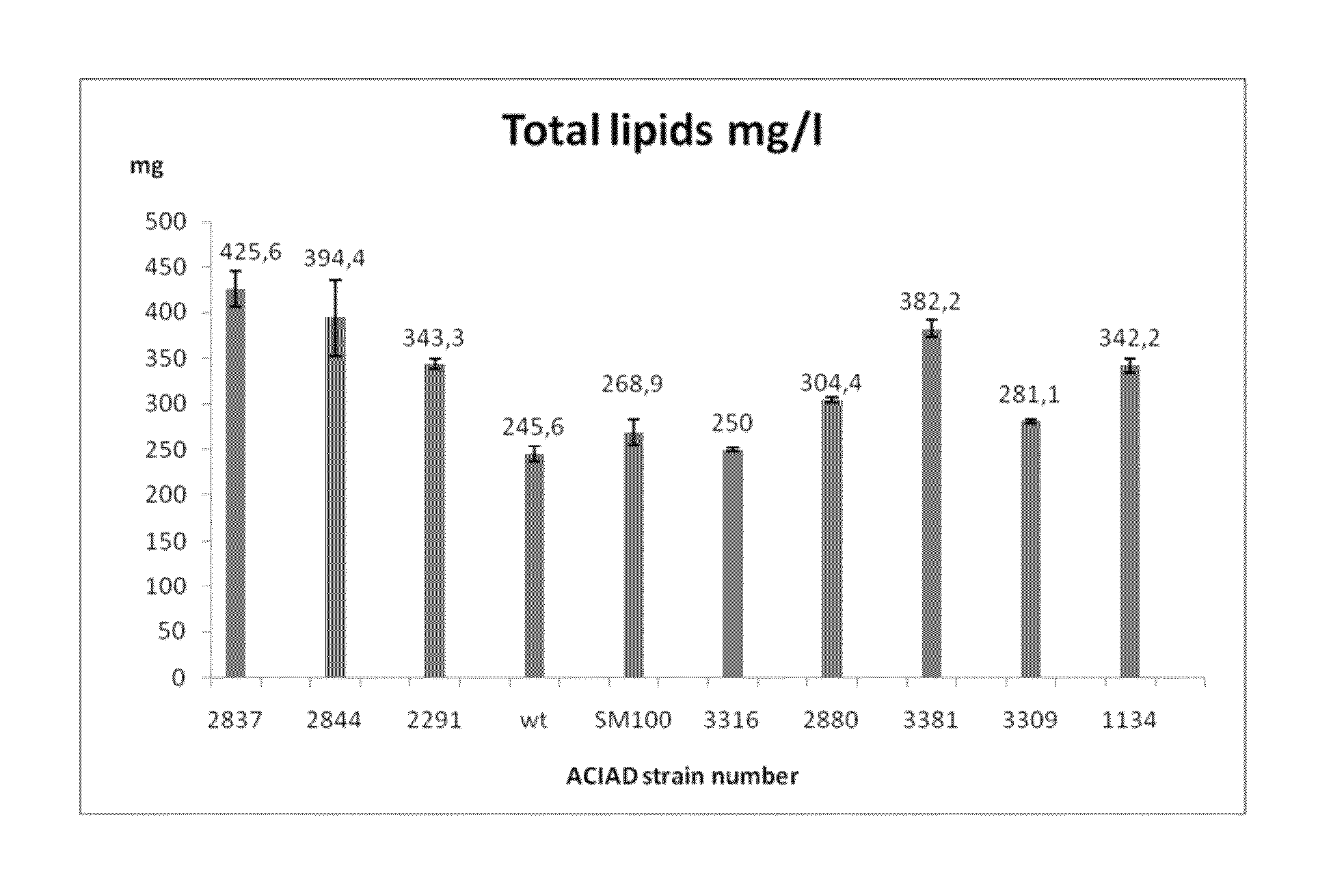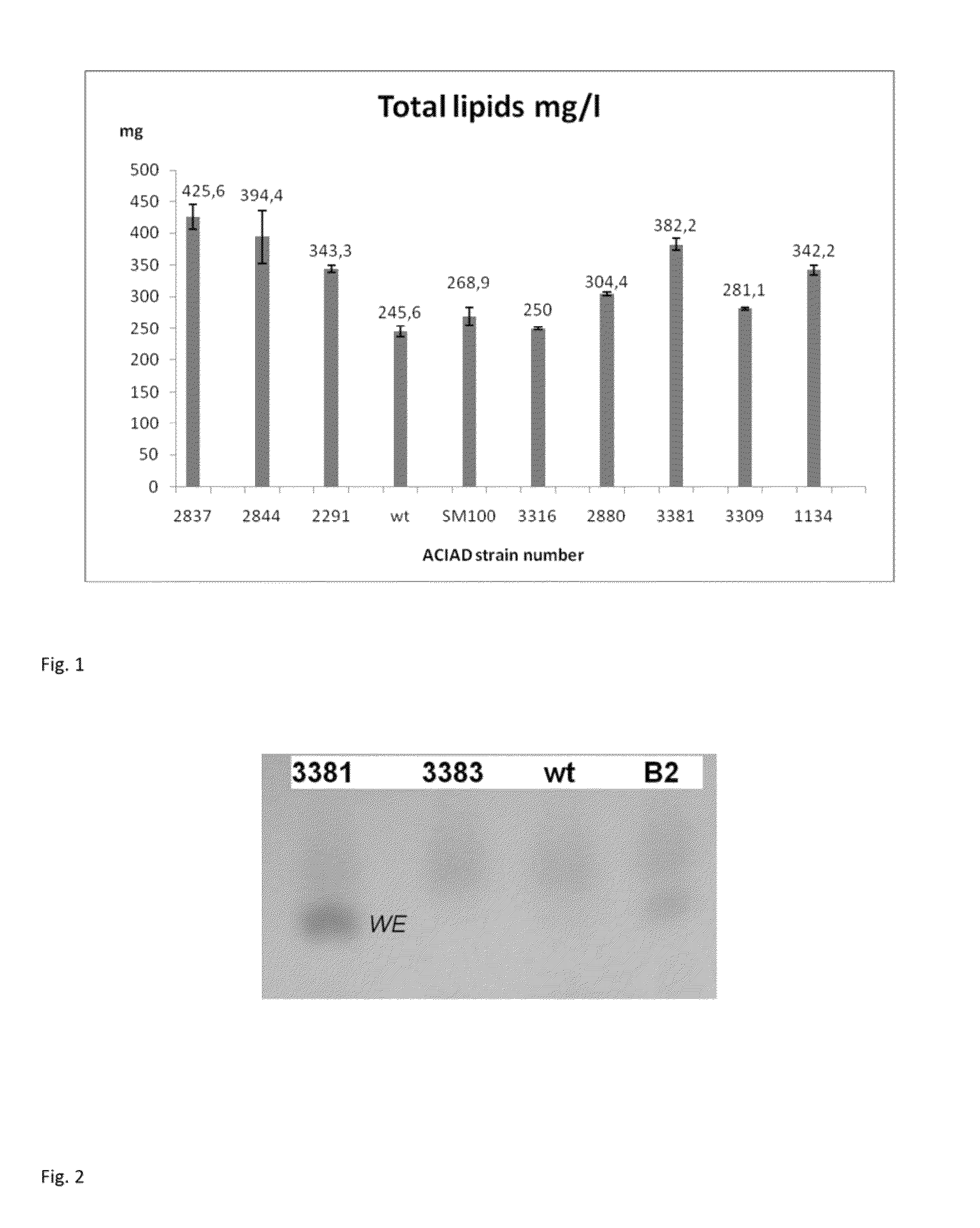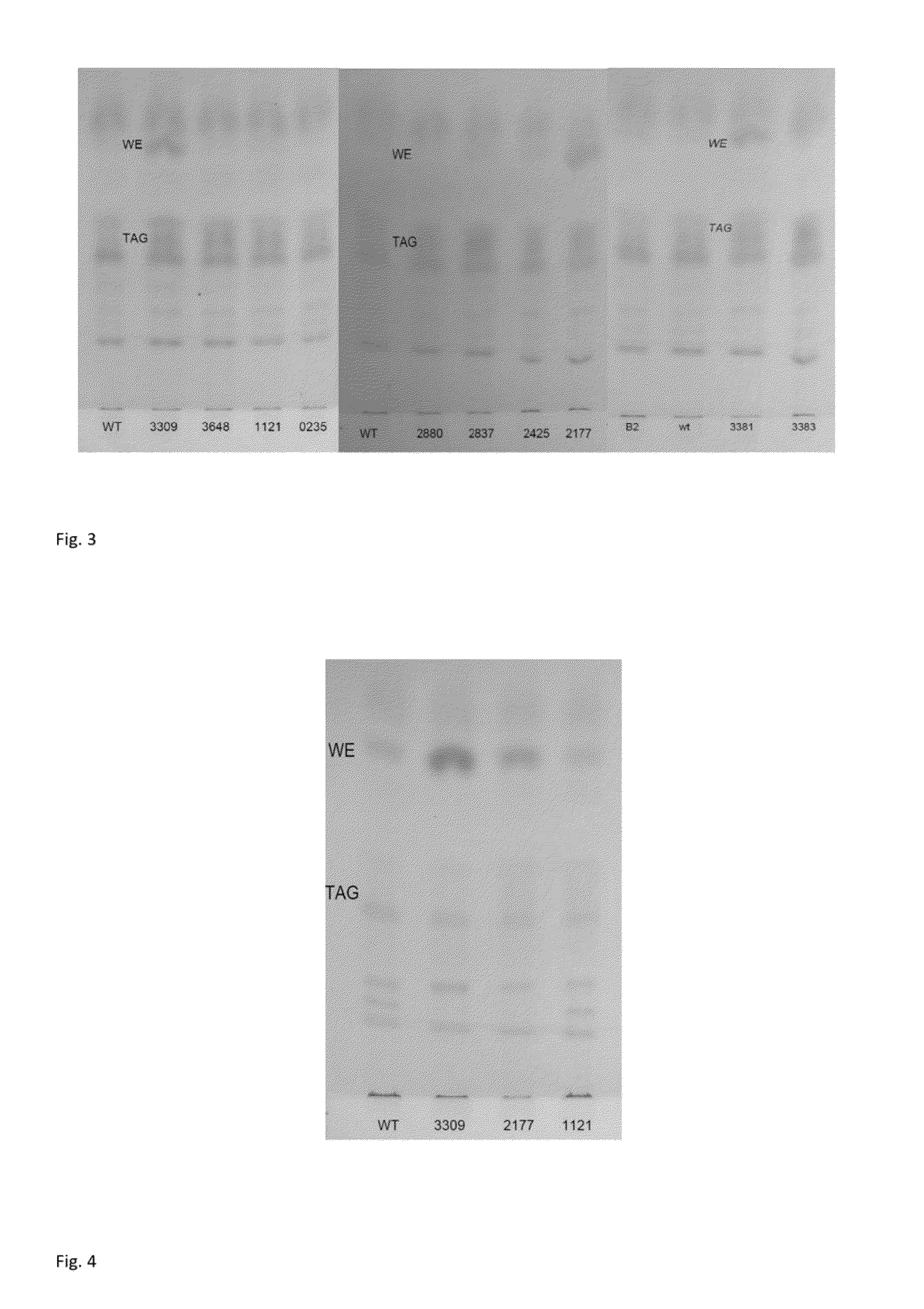Genetically modified Acinetobacter hosts for lipid production
a technology of lipid production and acinetobacter, which is applied in the direction of oxidoreductases, microorganism processes, liquid carbonaceous fuels, etc., can solve the problems of large product volume, large cost of product, and low production efficiency, and achieve the effect of improving lipid production
- Summary
- Abstract
- Description
- Claims
- Application Information
AI Technical Summary
Benefits of technology
Problems solved by technology
Method used
Image
Examples
example 1
Improvement of Total Lipid Production
Strains
[0213]Acinetobacter baylyi ADP1 wild type, also referred as BD413, is available to the public at American Type Culture Collection (ATCC, Accession number 33305). The natural wild type strain B2 is available to the public at Deutsche Sammlung von Mikroorganismen and Zellkulturen GmbH (DSMZ, Accession number 14961). Single gene knock-out mutants lacking the gene in question are referred as the gene name ACIAD[number], for example ACIAD3381 means ADP1 strain lacking the gene ACIAD3381.
[0214]The widely studied laboratory strain ADP1 does not carry any virulence or pathogenicity factors. Furthermore, most of the antibiotics used with E. coli are also effective against ADP1. ADP1 has competence to undergo natural transformation via an efficient DNA uptake and homologous recombination.
Growth Conditions
[0215]ADP1 strains were cultivated in LB (10 g / l tryptone, 5 g / l yeast extract, 10 g / l NaCl, pH 7), M9 minimal medium (6 g / l Na2HPO4, 3 KH2PO4, 1 g...
example 2
Improvement of Storage Lipid Production in a Function of Time
[0233]Genetic engineering of strains was done as in example 1. The strains B2, ADP1 wt, ACIAD3383, ACIAD3381 were cultivated in 50 ml MA / 9 medium supplemented with 0.2% cas.amino acids and 5% glucose. The cultivation was carried out at 37° C. and 300 rpm for 8 hours for each strain. Biomass of 2 ml samples was collected by centrifugation at 20000 g for 5 minutes and stored at −20° C.
TLC Analyses
[0234]For thin layer chromatography (TLC), lipid extraction was carried out in small-scale for 1.5-5 ml cultivation to quantify the amount of specific lipid components: the cells were centrifuged at 15000 rpm and the supernatant was discarded. Methanol (500 μl) was added on the cell pellets and tubes were shaken for one hour. Chloroform (250 μl) was added and tubes were shaken gently for additional hour. The tubes were centrifuged at 20000 g for 5 min. Additional 250 μl of chloroform and 250 μl of PBS were added to the tubes and the...
example 3
Improvement of Storage Lipid Production Per Cell
[0236]Genetic engineering of strains was done as in example 1. The strains B2, ADP1 wt, ACIAD3381, ACIAD3383, ACIAD2880, ACIAD3648, ACIAD2425, ACIAD2837, ACIAD3309, ACIAD2177, ACIAD1121 and ACIAD0235 were cultivated in 50 ml MA / 9 supplemented with 5% glucose and 0.2% cas.amino acids at 37° C. and 300 rpm for 30 hours. Samples containing same amount of biomass were centrifuged at 20000 g for 5 minutes and stored at −20° C.
[0237]The lipid extraction, TLC analyses and densitometric calculations were done as in example 2.
[0238]Based on the densitometric analysis, the relative differences in WE and TAG production between the strains were estimated and proportioned to the wild type value. It was calculated that for example ACIAD2177 produced 30 fold, ACIAD3309 produced 24 fold, ACIAD2837 produced 4 fold, ACIAD1121 produced 2 fold, ACIAD3648 produced 2 fold, and ACIAD3381 strain 17 fold the amount of wax esters compared to the wild type strai...
PUM
| Property | Measurement | Unit |
|---|---|---|
| pH | aaaaa | aaaaa |
| pH | aaaaa | aaaaa |
| temperature | aaaaa | aaaaa |
Abstract
Description
Claims
Application Information
 Login to View More
Login to View More - R&D
- Intellectual Property
- Life Sciences
- Materials
- Tech Scout
- Unparalleled Data Quality
- Higher Quality Content
- 60% Fewer Hallucinations
Browse by: Latest US Patents, China's latest patents, Technical Efficacy Thesaurus, Application Domain, Technology Topic, Popular Technical Reports.
© 2025 PatSnap. All rights reserved.Legal|Privacy policy|Modern Slavery Act Transparency Statement|Sitemap|About US| Contact US: help@patsnap.com



